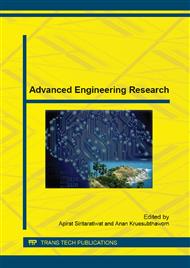p.471
p.475
p.479
p.483
p.487
p.491
p.495
p.500
p.507
Ultra-Capacitors and Battery Management System of Electric Vehicles
Abstract:
This paper presents a bidirectional converter system to manage power transfer between ultra-capacitors (UC) and batteries for electric vehicle applications. A bidirectional buck-boost converter is used as a key converter to control power flow of the system. A control method is introduced to increase life cycle of both batteries and UC. Ultimately, the proposed converter system is able to (i) manage power between DC-bus, batteries and UC, (ii) control the current to flow between batteries and UC, (iii) maintains battery operation within charging limits, (iv) maintain the voltage at UC as setting value, (v) control the recharging at the UC by using the energy feedback from the battery instead of the common DC-bus and (vi) manage UC and battery to be recharged by using regenerative braking system. The validation of the proposed system is verified with analysis and simulation results by using MATLAB/Simulink.
Info:
Periodical:
Pages:
487-490
Citation:
Online since:
August 2015
Authors:
Price:
Сopyright:
© 2015 Trans Tech Publications Ltd. All Rights Reserved
Share:
Citation:


